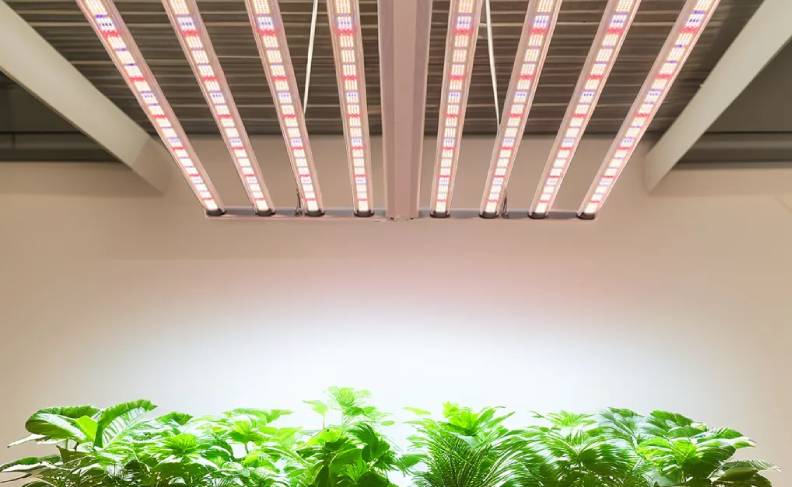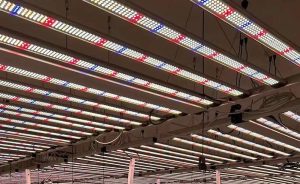
How to Choose the Right LED Grow Light for Your Space
Selecting the perfect LED grow light for your indoor garden might seem overwhelming with the multitude of options available today. However, making the right choice doesn’t have to be complicated when you understand how to match light specifications to your specific growing space. This guide will help you navigate the technical aspects of choosing an LED grow light that provides optimal coverage, intensity, and efficiency for your plants.
Understanding Your Growing Space Requirements
Before diving into wattage calculations and coverage specifications, you need to clearly define your growing space and objectives:
Measuring Your Growing Area
The first step is measuring the actual space where your plants will grow. Measure the length and width of your growing area in feet or centimeters. Common grow tent sizes include:
- 2ft x 2ft (60cm x 60cm)
- 3ft x 3ft (90cm x 90cm)
- 4ft x 2ft (120cm x 60cm)
- 4ft x 4ft (120cm x 120cm)
- 5ft x 5ft (150cm x 150cm)
Remember that the effective growing area is typically slightly smaller than the total tent size due to equipment placement and airflow considerations.
Determining Plant Count and Size
Consider how many plants you plan to grow and their expected size at maturity. High-density setups with many smaller plants have different lighting requirements than setups with fewer, larger plants.
Identifying Plant Light Requirements
Different plant species have varying light intensity needs:
- Low-light plants (many herbs, leafy greens): 15-30 watts per square foot
- Medium-light plants (peppers, tomatoes): 30-40 watts per square foot
- High-light plants (flowering plants, fruiting crops): 40-65+ watts per square foot
Decoding LED Grow Light Specifications
Now that you understand your requirements, let’s examine the key specifications that determine a grow light’s suitability for your space:
Actual Power Draw vs. Equivalent Wattage
Many manufacturers list marketing terms like “1000W equivalent” which can be misleading. What matters is the actual power consumption (measured in watts) that determines your electricity usage and gives a general indication of light output.
For example, our Titan Grow 900 has an actual power draw of 900 watts, providing clear information about its true capacity.
Understanding Coverage Area Specifications
LED grow light coverage is typically specified for two different installation heights:
- Vegetative coverage: Larger area with lower intensity, suitable for seedlings and vegetative growth
- Flowering coverage: Smaller area with higher intensity, necessary for flowering and fruiting stages
For example, the Titan Grow 700 provides optimum coverage for a 4ft x 4ft (120cm x 120cm) area during both vegetative and flowering stages, making it versatile for full-cycle growing.
PPFD Maps and Light Distribution
PPFD (Photosynthetic Photon Flux Density) maps show the distribution of light intensity across your growing area. These visual representations help you understand how evenly the light is distributed and identify potential hot spots or edge drop-off.
Ideal PPFD ranges for different growth stages:
- Seedlings/clones: 200-300 μmol/m²/s
- Vegetative growth: 300-600 μmol/m²/s
- Flowering/fruiting: 600-1000+ μmol/m²/s
Look for lights that provide uniform PPFD distribution across your growing area, avoiding designs with intense center hot spots and weak edges.
Calculating the Right Wattage for Your Space
While there’s no one-size-fits-all formula, these guidelines will help you determine appropriate wattage for different growing scenarios:
Basic Wattage Calculation
For high-light plants in a dedicated grow space, the general rule is 30-50 watts of actual LED power per square foot (or 320-540 watts per square meter).
Calculation example:
- For a 4ft x 4ft tent (16 square feet): 16 sq ft × 40 watts = 640 watts ideal
- For a 120cm x 120cm tent (1.44 square meters): 1.44 sq m × 430 watts = 620 watts ideal
This makes our Titan Grow 700 (700 watts) perfectly suited for a standard 4ft x 4ft growing area when growing light-hungry plants.
Adjusting for Plant Type and Growth Stage
If you’re growing primarily low-light plants like lettuce or herbs, you can reduce the wattage by 30-40%. Conversely, for very high-light plants or for maximizing yields, you might want to increase wattage by 10-20%.
Considering Mounting Height
Remember that mounting height affects light intensity. Higher mounting provides more even coverage but lower intensity, while lower mounting increases intensity but reduces coverage area. Most LED grow lights perform best when mounted 12-24 inches above the plant canopy.
Matching Our Titan Series to Your Growing Space
Based on the principles above, here’s how our Titan series LED grow lights match different growing spaces:
Titan Start 300 (320W)
- Ideal coverage: 4ft x 2ft (120cm x 60cm)
- Perfect for: Small home grow tents, 2-4 plants
- Light intensity: Suitable for seedlings to full maturity
- Recommended space: 120cm x 120cm tent for low/medium-light plants or 2ft x 4ft area for high-light plants
- LED diodes: Samsung LM281B
Titan Grow 700 (700W)
- Ideal coverage: 4ft x 4ft (120cm x 120cm)
- Perfect for: Standard grow tents, 4-9 plants
- Light intensity: Excellent for all growth stages including flowering
- Recommended space: 120cm x 120cm or 150cm x 150cm tents
- LED diodes: Samsung LM281B
Titan Grow 900 (900W)
- Ideal coverage: 4ft x 4ft (120cm x 120cm) with higher intensity
- Perfect for: Standard to large grow tents, 4-9 plants
- Light intensity: Superior for light-hungry plants and maximum yields
- Recommended space: 120cm x 120cm, 150cm x 150cm, or 120cm x 240cm (with two lights)
- LED diodes: Samsung LM281B
Titan Nitro 1000W (1000W)
- Ideal coverage: 5ft x 5ft (150cm x 150cm) to 6ft x 6ft (180cm x 180cm)
- Perfect for: Large grow tents or commercial applications, 9+ plants
- Light intensity: Commercial-grade for maximum productivity
- Recommended space: 150cm x 150cm or larger growing areas
- LED diodes: Samsung LM301H
Avoiding Common Sizing Mistakes
When matching an LED grow light to your space, be careful to avoid these common pitfalls:
Underestimating Light Requirements
One of the most common mistakes is choosing a light with insufficient power for your space. This results in stretched, leggy plants, reduced yields, and disappointing results. It’s better to have slightly more light (which can be dimmed if needed) than too little.
Overlooking Edge Coverage
Many cheaper lights create a “spotlight effect” with intense center illumination but poor edge coverage. This leads to uneven growth across your canopy. Look for fixtures designed with wide-angle optics or multiple light bars (like our Titan series) that provide edge-to-edge coverage.
Ignoring Vertical Space Limitations
Some powerful LED fixtures generate significant heat and must be mounted farther from plants, requiring more vertical space. Our Titan series features efficient heat management that allows for closer mounting, maximizing your vertical growing space.
Focusing Only on Purchase Price
While budget considerations are important, calculating the total cost of ownership (including electricity consumption and bulb replacements for non-LED options) often reveals that higher-quality LED fixtures are more economical in the long run.
Scaling Your Setup: Starting Small and Expanding
If you’re new to indoor growing or working with budget constraints, consider these scaling strategies:
Begin with Quality Over Quantity
It’s better to properly illuminate a smaller growing area than to inadequately light a larger space. Start with a quality light covering a smaller area, then expand as your experience and budget grow.
Modular Approaches
Our Titan series lights can be used in modular configurations, allowing you to start with a single unit and add more as needed. The group control functionality enables synchronized operation across multiple fixtures.
Grow Tent Considerations
When selecting a grow tent, ensure it has appropriate height for your light and plants. Most LED grow lights perform best in tents that are at least 5-6 feet tall, allowing proper distance between the light and mature plants.
Conclusion: The Perfect Match for Growing Success
Choosing the right LED grow light for your space is a crucial factor in your indoor growing success. By understanding coverage requirements, calculating appropriate wattage, and considering your specific plants’ needs, you can make an informed decision that provides optimal growing conditions.

No Comments